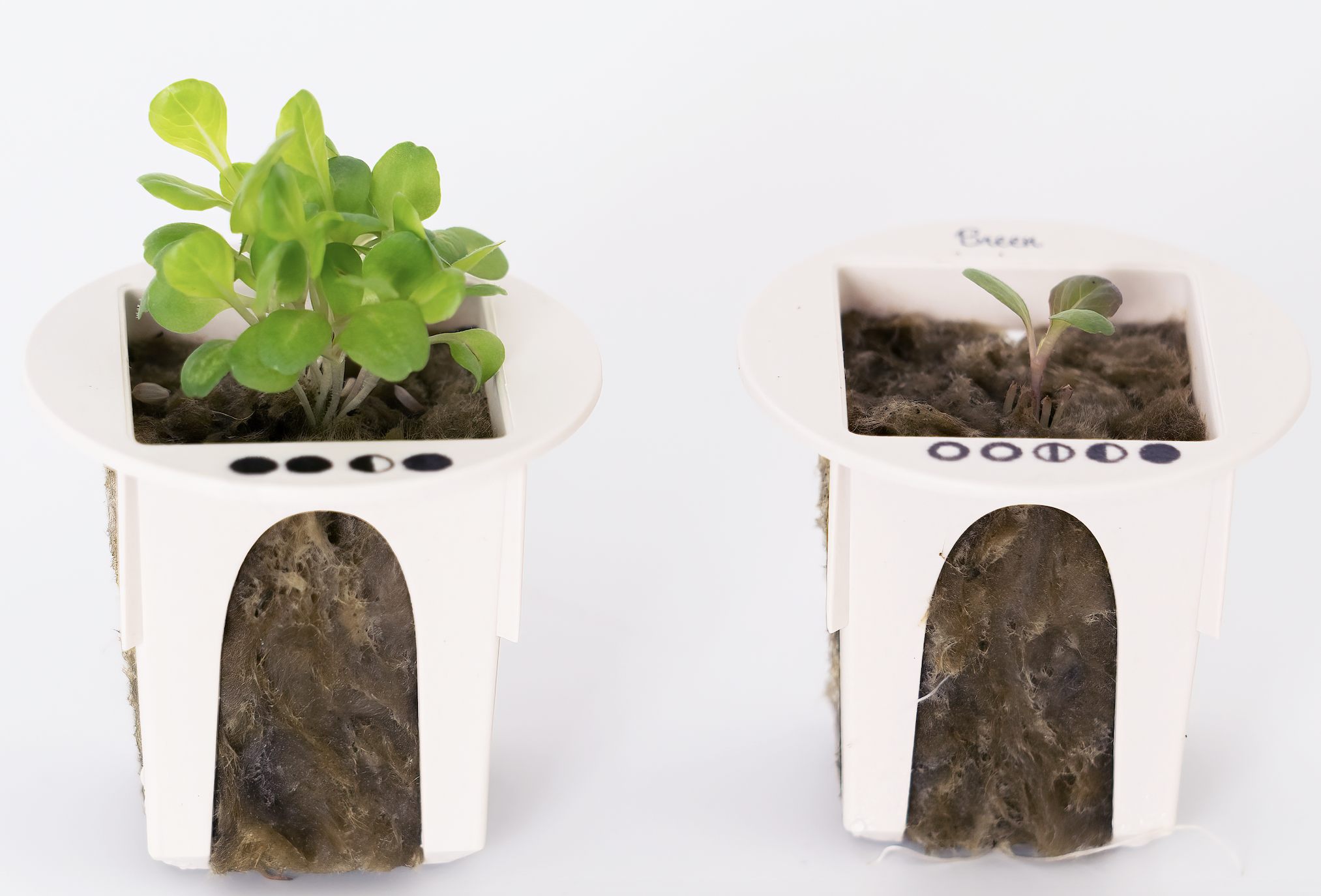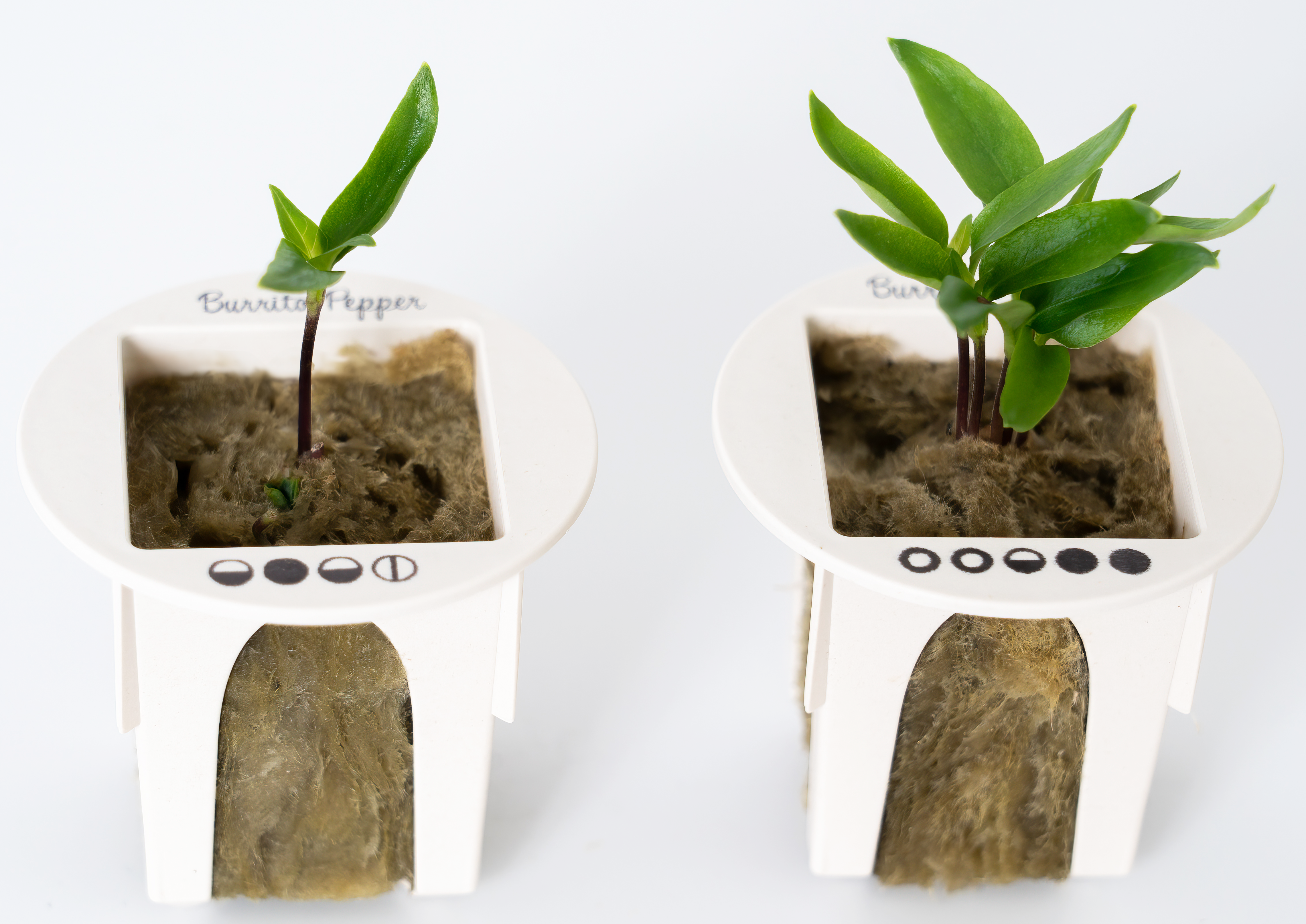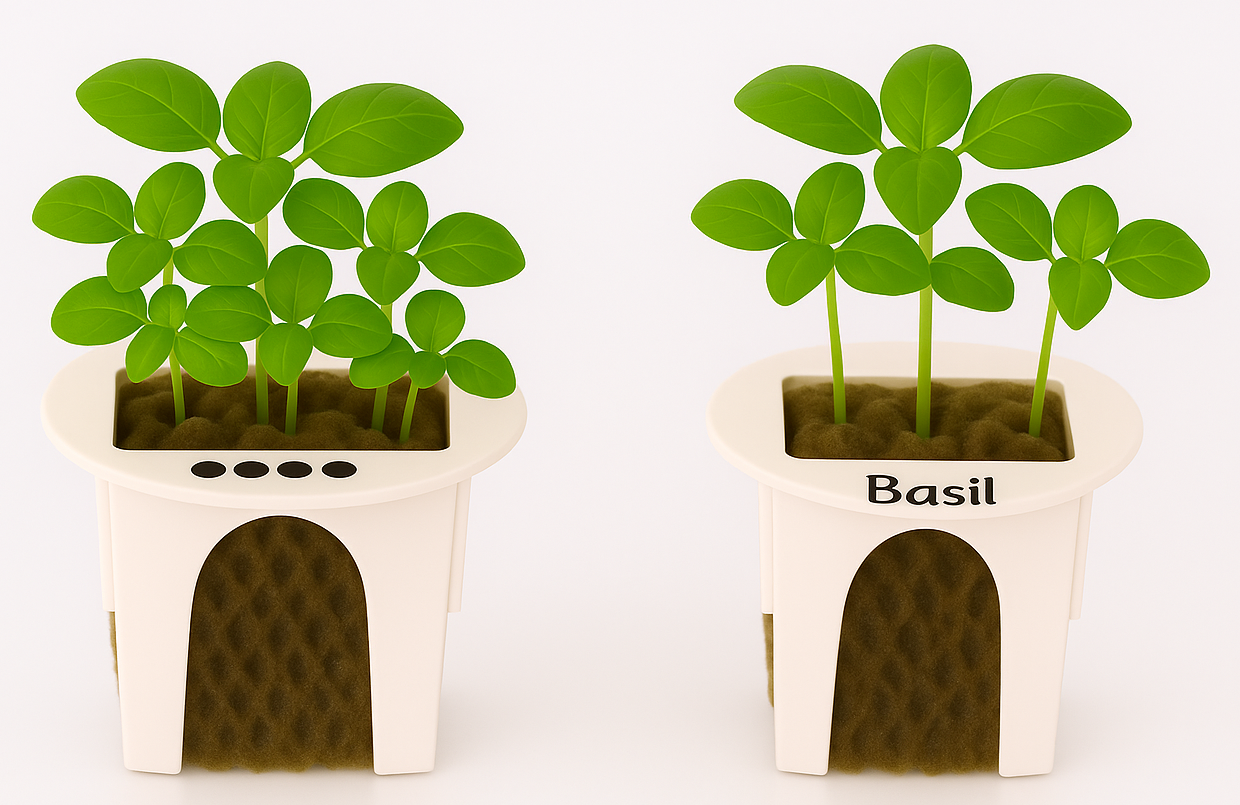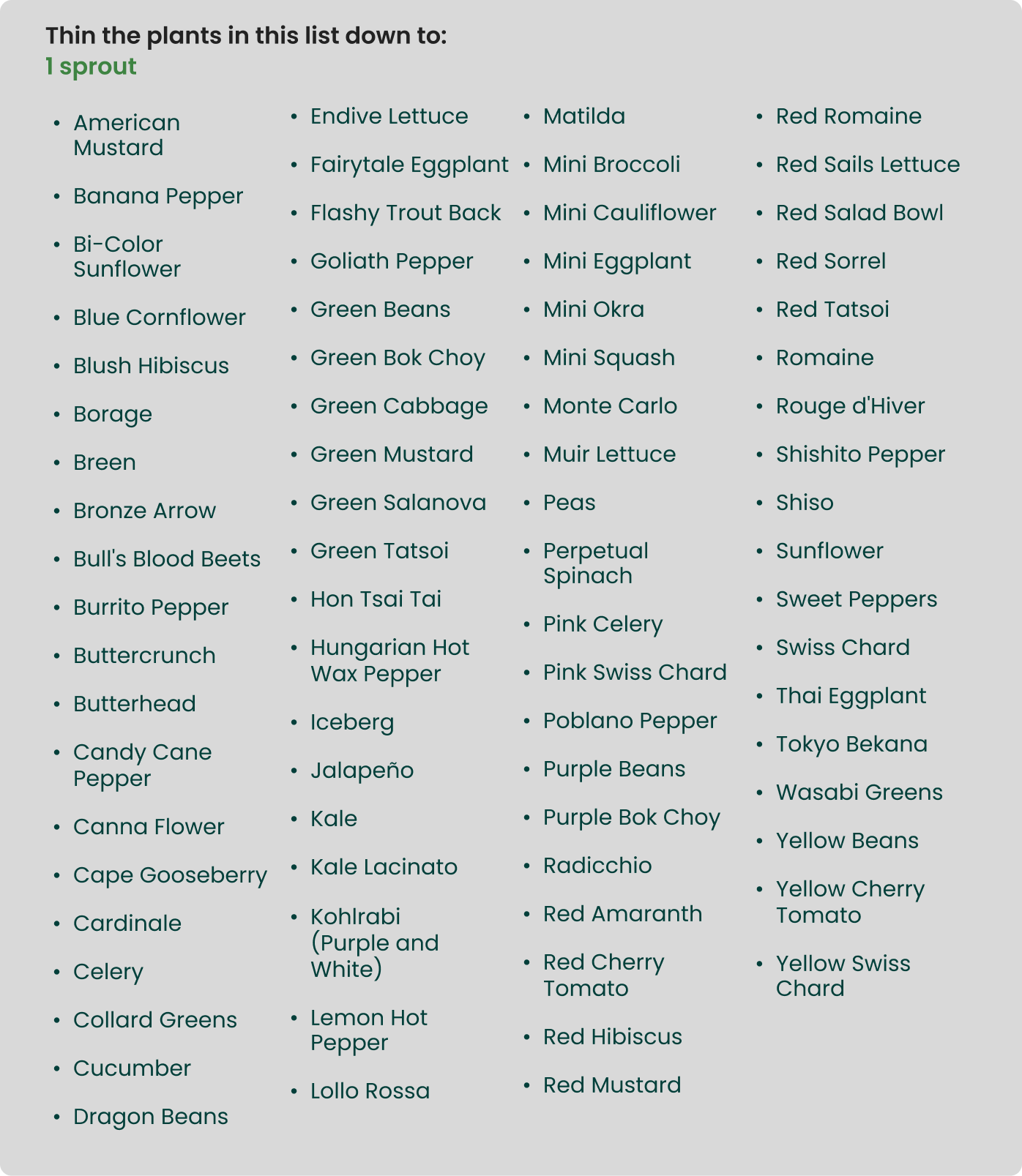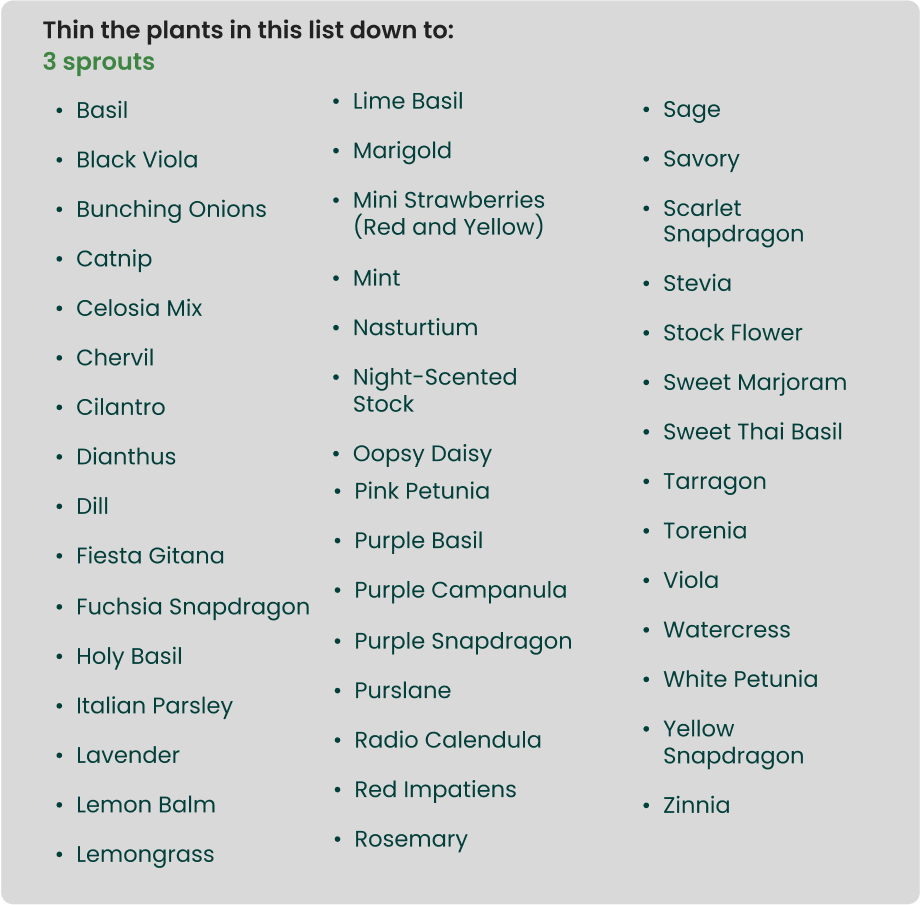How, Why, & When to Select Sprouts to Thin
Watch the video
The same steps and more are written below.
What does Sprout Selection and Thinning your Sprouts mean? Why does it matter?
Selecting sprouts is mission-critical to growing big, healthy plants that give you more to eat and enjoy! It means removing some sprouts, giving the remaining plant(s) increased access to light, water, nutrients, air, and space so they can grow better without as much competition for resources.
We know this can feel like a tough choice, selecting your favorite and trimming your beloved sprouts - but trust us - it's the best thing you can do for your plant! 🌱 By guiding your plant to specific strong sprouts, you're making sure your plant gets all the light and nutrients it needs to grow big and bountiful.
We put extra seeds in each yCube to guarantee strong germination, but that's where you come in. Your help is critical to selecting the right number of sprouts and preventing competition for light, space, and nutrients. This key partnership allows the chosen sprout to grow into a much more bountiful plant. This results in a bigger harvest for you, less risk of pests, and a longer, healthier plant life. It’s a win-win for everyone!
How to Select Sprouts to Thin
Kelby will let you know when it's the best time to select sprouts and will include a task with details. All you need is a clean pair of scissors, such as Gardyn Scissors, to cut your sprouts at their base.
One sprout may have several leaves, or it may have no leaves. Every single stem coming out of the rockwool is one sprout, no matter how many leaves it has.
The exception is these five plants that we think you'll enjoy more if you let them grow untouched: Arugula, Chamomile, Chives, Garlic Chives, and Wheatgrass.
1. Select 1 sprout per yCube for all of your leafy greens and lettuces, fruiting plants, and large flowers
Leafy greens and lettuces include butterhead, breen, spinach, mustards, bok choy, tatsoi, and Swiss chard, to name a few.
If you’re growing any fruiting plants (tomatoes, peppers, etc.) or large flowers (sunflowers, hibiscus), select these sprouts down to 1 per yCube, too.
Tip: Leafy green, lettuce, and herb sprouts are all edible, so try ‘em out!
Leafy green yCube, sprouts unselected (left) and sprout selected with 1 sprout remaining (right)
Fruiting plant yCube, sprout selected with 1 sprout remaining (left) and sprouts unselected (right)
2. Select 3 Sprouts per yCube for all of your herbs or small flowers
Herbs include plants like basil, cilantro, dill, and mint.
Small flowers include violas, snapdragon, petunias, and marigolds.
Basil yCube, sprouts unselected (left) and sprouts selected with 3 sprouts remaining (right)
3. Not sure what kind of plant you're looking at? We've got you!
You'll find each plant listed by name below, and a link to its dedicated page with more details. Don’t worry if you mix up a plant or two - it happens! What matters most is selecting some sprouts instead of skipping the step altogether.
When to Select Sprouts to Thin
It’s best to choose your sprouts about one week after they’ve received plant food. This timing gives you a better sense of which ones are growing strong and healthy. Keep in mind - taller doesn’t always mean better! If a sprout looks “leggy,” you may want to pick one that’s more compact and balanced.
If you’re growing your very first set of plants, or starting fresh with all new plants, Kelby will send you a task in the app when it’s time to select your sprouts.
Once you have selected and trimmed your sprouts, consider placing a yCover over the yCube. Adding the cover at this stage helps block light from reaching the rockwool, which is one of the most effective ways to prevent algae. This keeps the yCube cleaner and creates a healthier environment for your plant as it continues to grow.
All varieties by plant type
Select 1 Sprout
Fruiting plants: Banana Pepper, Burrito Pepper, Candy Cane Pepper, Cape Gooseberry, Cucumber, Dragon Beans, Fairytale Eggplant, Goliath Pepper, Green Beans, Hungarian Hot Wax Pepper, Jalapeño, Lemon Hot Pepper, Mini Eggplant, Mini Okra, Mini Squash, Peas, Poblano Pepper, Purple Beans, Purple Cayenne Pepper, Red Cherry Tomato, Shishito Pepper, Sweet Peppers, Thai Eggplant, Yellow Beans, Yellow Cherry Tomato
Lettuces & Leafy Greens: American Mustard, Breen, Bronze Arrow, Bull's Blood Beets, Buttercrunch, Butterhead, Cardinale, Celery, Collard Greens, Endive Lettuce, Flashy Trout Back, Green Bok Choy, Green Cabbage, Green Mustard, Green Salanova, Green Tatsoi, Hon Tsai Tai, Iceberg, Kale, Kale Lacinato, Kohlrabi (Purple and White), Lollo Rossa, Matilda, Mini Broccoli, Mini Cauliflower, Monte Carlo, Muir Lettuce, Perpetual Spinach, Pink Celery, Pink Swiss Chard, Purple Bok Choy, Radicchio, Red Amaranth, Red Mustard, Red Romaine, Red Sails Lettuce, Red Salad Bowl, Red Sorrel, Red Tatsoi, Romaine, Rouge d'Hiver, Shiso, Swiss Chard, Tokyo Bekana, Wasabi Greens, Yellow Swiss Chard
Large flowers: Bi-Color Sunflower, Blue Cornflower, Blush Hibiscus, Borage, Canna Flower, Sunflower, Red Hibiscus
Select 3 Sprouts
Herbs: Basil, Bunching Onions, Catnip, Chervil, Cilantro, Dill, Holy Basil, Italian Parsley, Lavender, Lemon Balm, Lemongrass, Lime Basil, Mint, Purple Basil, Purslane, Rosemary, Sage, Savory, Stevia, Sweet Thai Basil, Sweet Marjoram, Tarragon, Watercress
Small flowers: Black Viola, Celosia Mix, Dianthus, Fiesta Gitana, Fuchsia Snapdragon, Marigold, Nasturtium, Night-Scented Stock, Oopsy Daisy, Pink Petunia, Purple Campanula, Purple Snapdragon, Radio Calendula, Red Impatiens, Scarlet Snapdragon, Stock Flower, Torenia, Viola, White Petunia, Yellow Snapdragon, Zinnia
Fruiting plants: Mini Strawberries (Red and Yellow)
Questions? Reach us at support@mygardyn.com, or chat with us! We're here to help.
Get Self-Guided Help in the App
From a Mobile device, click here
From a laptop or desktop, click here for instructions

